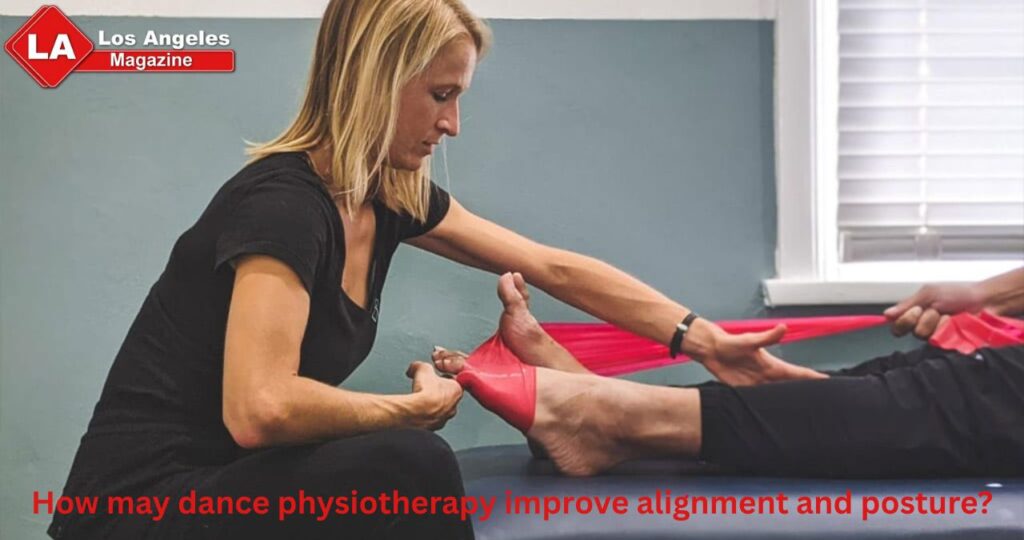A wonderful art form, dance calls for strength, flexibility, and accuracy. Many times pushing their bodies to the maximum, dancers risk injuries and posture problems. Not only for performance but also for avoiding long-term injury is keeping correct posture and alignment vital. Helping dancers better their posture, heal from injuries, and improve their general body mechanics depends mostly on dance physiotherapy. To keep dancers in best form, this specialist dance physiotherapy emphasizes movement patterns, muscle balance, and joint stability.
Grasping Dance Physiotherapy
Dance physiotherapy is a specific branch of physiotherapy that is suited to the unique physical challenges of the dancer. An evaluation of movement patterns, muscle imbalances, and postural issues helps create tailored therapy plans. These professionals work closely with dancers, helping them to improve their technique and prevent common injuries due to repeated movements and incorrect posture.
Dance Physiotherapy to Correct Posture
One of the key advantages of dance physiotherapy is the correction of postural issues. They adopt postural abnormalities as many dancers perform multiple movements and spend hours, weeks, months, and years training. Physiotherapist assesses a dancer’s posture, noting hip, shoulder and spinal misalignments. Dance physiotherapy relies on hands-on methods, stretches and exercises to realign the body and strengthen the muscles needed for good posture. Better posture not only enhances a dancer’s performance, but also reduces strain on the body, thus decreasing chronic pain and injury.
Improving Alignment for Optimal Performance
Dancers must be in alignment if they are to perform gracefully and precisely. Inaccurate movement patterns resulting from poor alignment raise the injury risk. Through body training to teach proper movement, dance physiotherapist works to improve alignment. Targeting core strength, hip stability, and shoulder alignment, exercises assist dancers keep correct alignment throughout difficult motions. Better balance, coordination, and general body control attained by dancers focusing on alignment can help them to perform with better quality.
Rehabilitation and Prevention of Damage
Dancers bear risk of accidents due to the demanding physical exertion during training and performances. An excellent injury preventing tool, dance physiotherapy identifies areas of muscle tension and weakness. Physiotherapy, strengthening exercises and stretching regimens are used by physiotherapists to keep muscle and joints supple. But when injuries occur, a dance physiotherapy uses rehabilitation together with specific treatment plans designed to ultimately focus on recovery and the ability to regain strength. It ensures that dancers can return to their routines in safety and without injury after long term damage.
Building Stability with Your Core Muscles
Good posture and alignment require a strong core. Dance physiotherapy also includes exercises which target strengthening core muscles — the ones that protect the spine and give stability in general. Weak core muscles can lead to poor posture and imbalance which increases your risk of falls and injuries. Specifically, physiotherapists guide dancers through specific movements aimed at increasing the strength of their core thus providing greater stability and control in their movements. Developing strength in the core also builds stamina, allowing dancers to maintain their shape throughout long rehearsals and performances.
Developing Joint Mobility and Flexibility
Dance does necessitate flexibility, but an overabundance, coupled with lack of muscular control, can lead to instability and misalignment. Dance physiotherapy enables dancers to find the perfect balance between flexibility and strength. Stretching exercises are supposed to increase the freedom of motion at the joints and ensure that the muscles that stabilize those joints remain strong. This reduces the risk of overuse injuries and makes it easier for dancers to move organically. Having good joint mobility helps when transitioning from one motion to another, so also makes the who flow of dance routines easier.
Wherever used for performance enhancement, rehabilitation, or injury prevention, dance physiotherapy is fundamental to maintaining a dancer’s physical condition. Proper physiotherapy support allows dancers to step with assurance, precision, and style, ensuring a lengthy and prosperous dancing career.



